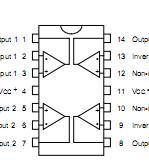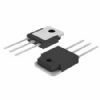TS274C,I,M: Features: · OUTPUT VOLTAGE CAN SWING TO GROUND· EXCELLENT PHASE MARGIN ON CAPACITIVE LOADS· GAIN BANDWIDTH PRODUCT: 3.5MHz· STABLE AND LOW OFFSET VOLTAGE· THREE INPUT OFFSET VOLTAGE SELECTIONSPinout...
floor Price/Ceiling Price
- Part Number:
- TS274C,I,M
- Supply Ability:
- 5000
Price Break
- Qty
- 1~5000
- Unit Price
- Negotiable
- Processing time
- 15 Days
SeekIC Buyer Protection PLUS - newly updated for 2013!
- Escrow Protection.
- Guaranteed refunds.
- Secure payments.
- Learn more >>
Month Sales
268 Transactions
Payment Methods
All payment methods are secure and covered by SeekIC Buyer Protection PLUS.

 TS274C,I,M Data Sheet
TS274C,I,M Data Sheet








